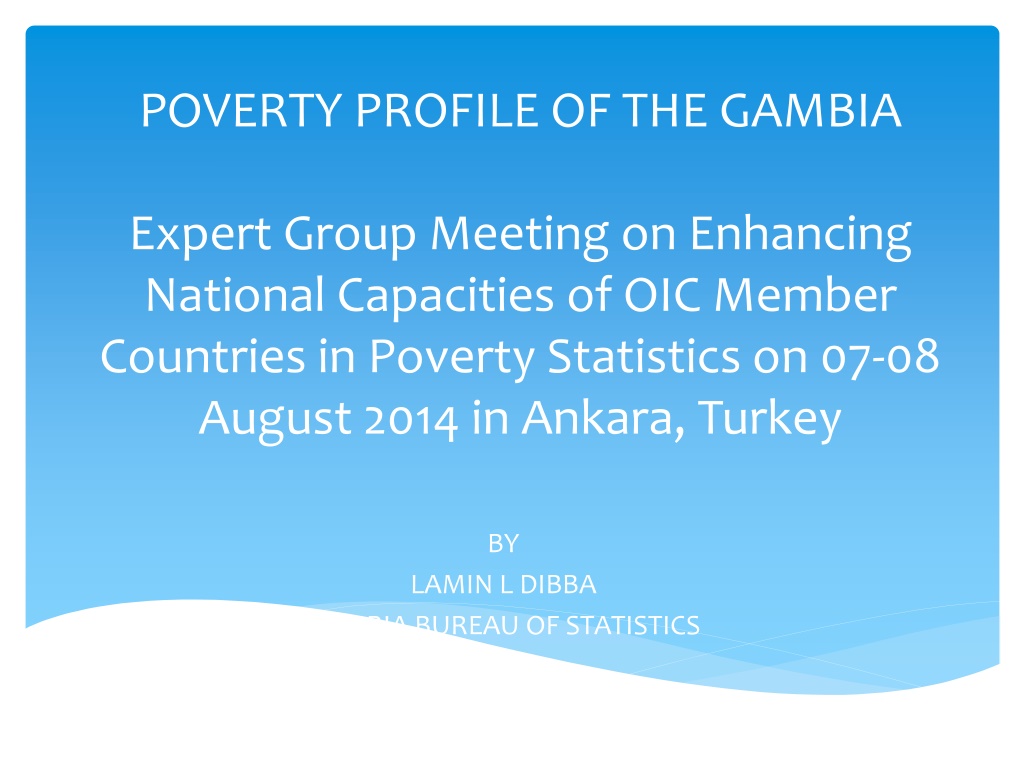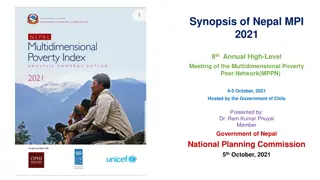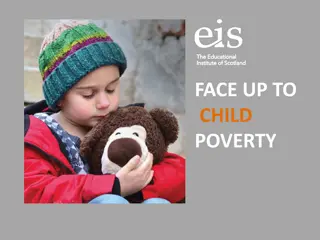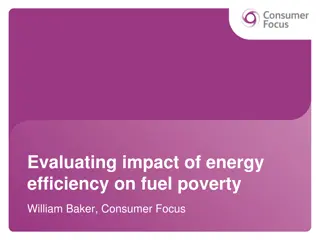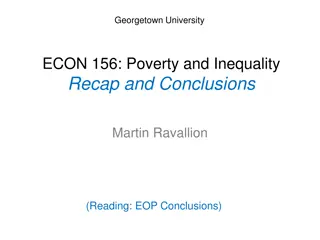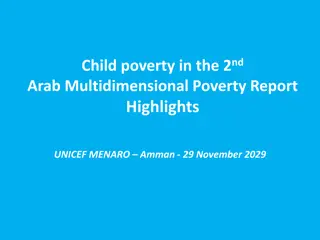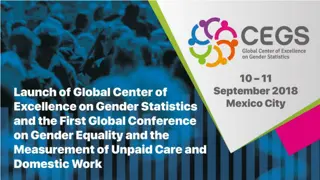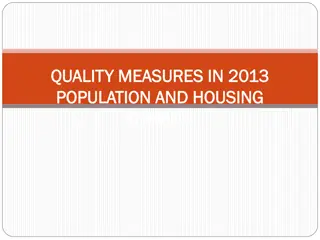Poverty Profile of The Gambia: A Comprehensive Examination
The poverty profile of The Gambia was analyzed in-depth through various studies and assessments from 1998 to 2010. Findings reveal a reduction in food poverty but an overall increase in poverty depth. Female-headed households showed lower poverty rates compared to male-headed households. Challenges in poverty measurement include data quality, financial constraints, and human capacity limitations.
Download Presentation

Please find below an Image/Link to download the presentation.
The content on the website is provided AS IS for your information and personal use only. It may not be sold, licensed, or shared on other websites without obtaining consent from the author. Download presentation by click this link. If you encounter any issues during the download, it is possible that the publisher has removed the file from their server.
E N D
Presentation Transcript
POVERTY PROFILE OF THE GAMBIA Expert Group Meeting on Enhancing National Capacities of OIC Member Countries in Poverty Statistics on 07-08 August 2014 in Ankara, Turkey BY LAMIN L DIBBA GAMBIA BUREAU OF STATISTICS
OUTLINE - Poverty Studies / Assessments - Poverty Levels / Trends - Poverty and active population - Challenges - Way Forward
Poverty studies/assessments Four main such studies/assessments 1998 Food Poverty Study 2003 Integrated Household Survey 2008 Poverty Assessment 2010 Integrated Household Survey
Poverty Levels/Trend From the 1998 Food Poverty study, 69% of the population were registered to be poor. Food poverty fell by 11 percentage points to 58% in 2003 (IHS 2003). Overall poverty was 55.5% in 2008 (Poverty Assessment 2008). In the IHS 2010, two thresholds were used: <$1.00 per person per day , incidence of poverty was 36.7% and <$1.25 per person per day , incidence of poverty was 48.4%
Poverty Levels/Trend Depth of poverty increased for both thresholds between 2003 and 2010 (the two IHSs). For the <$1.00 threshold, depth of poverty increased from 20.8% in 2003 to 21.8% in 2010 The corresponding figures for the upper poverty line are 25.1 per cent and 27.9
Poverty Levels/Trend According to the 2010 IHS, the incidence and depth of poverty is lower for female headed households. 38% of female headed households live under less than 1.25 dollar per day compared to 50.9% of male headed households For <$1.00 threshold, the corresponding figures are 28.2% and 38.8% respectively
Poverty and the active population Proportion of the active population living below the $1.25 poverty line Male Female Total Age group 15 - 24 25 - 29 30 - 34 35 - 39 40 - 44 45 - 49 50 - 54 55 - 59 60 - 64 Total 49 35 32 31 34 34 35 41 44 37 48 43 37 41 45 38 45 40 44 42 49 40 35 36 39 36 39 40 44 40
CHALLENGES Key challenges of poverty measurement are: Data problem (Quality) Finance Human capacity
Data Problem Data availability Data collection issues Coverage issues Content issues Responses about income are inaccurate Data management issues
Financial issues No set budget for conducting poverty studies Done only when requested, usually within work programs of UNDP Expansion of the scope and coverage of future poverty studies i.e Increase sample size. Lack of funds for specialized training of local persons in poverty studies and analysis. Improve incentive for sustenance of highly trained and qualified persons.
Human capacity issues There is no capacity within the system for poverty analysis The previous studies/assessments were done by outside experts No proper transfer of knowledge Attrition of the few with some sort of skills
Way forward Internal efforts are required for: Improving the data quality Improving data availability Improving the understanding level of respondents on the need for accurate data External efforts are required for: Short term capacity improvement in poverty analysis Long term training of personnel in poverty measurement and analysis Assisting in maintaining the capacity: retention
